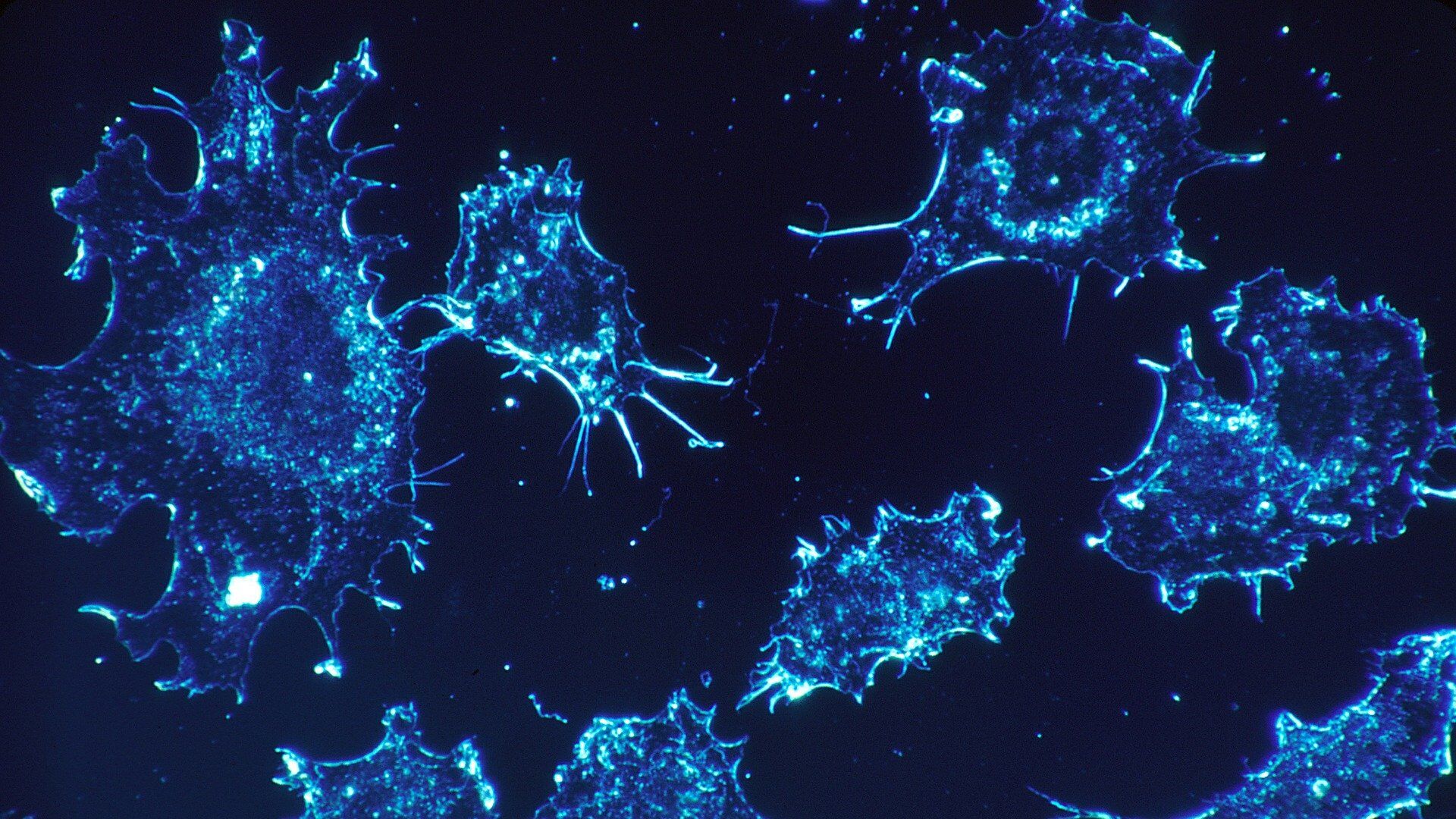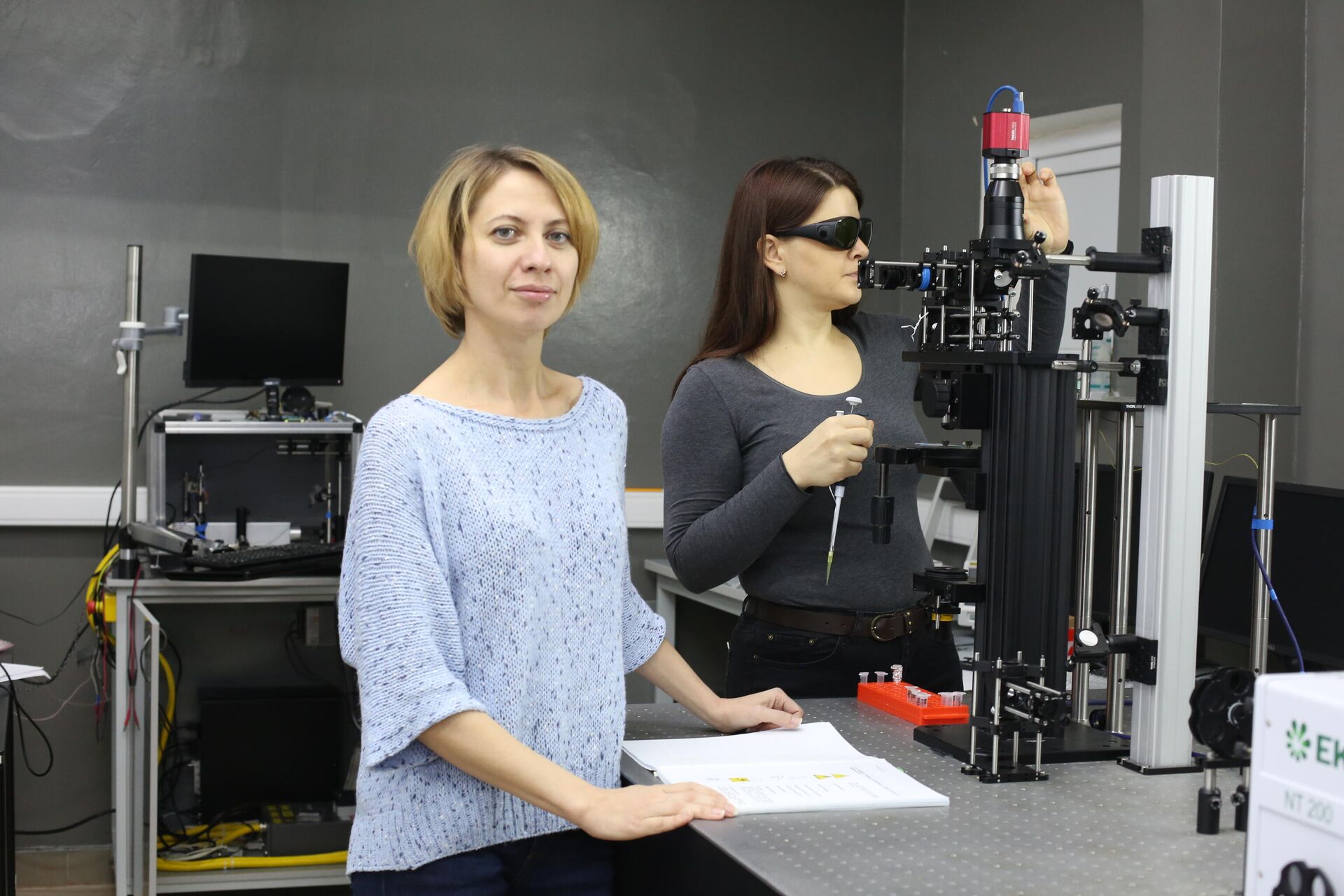https://sputnikglobe.com/20211217/scientists-some-up-with-new-effective-method-to-detect-cancer-cells-in-blood-1091601580.html
Scientists Сome Up With New Effective Method to Detect Cancer Cells in Blood
Scientists Сome Up With New Effective Method to Detect Cancer Cells in Blood
Sputnik International
Scientists of Saratov State University (SSU) have found out the parameters of the laser radiation at which melanoma cells produce ultrasonic signals.
2021-12-17T12:27+0000
2021-12-17T12:27+0000
2023-04-21T10:42+0000
saratov state university
cancer
blood
science & tech
health
cells
https://cdn1.img.sputnikglobe.com/img/105932/18/1059321818_0:0:1921:1080_1920x0_80_0_0_53d601f8cd1994403fb07d595b911487.jpg
The research was published in the journal ‘Scientific Reports’.According to SSU, in approximately 90 percent of cases cancer mortality is related to the formation of metastases when cancer cells from the primary tumour penetrate into lymphatic and blood vessels and continue to spread through the body.Primary tumours are often surgically removed with success; therefore, non-metastatic cancer is treatable, unlike metastatic cancer, in which numerous metastases develop in various organs. In a situation like this, it is important to detect cancer cells in the patient’s blood as early as possible.In this process, a sample with blood is placed into the flow cytometer, which makes blood cells flow one cell at a time through a laser beam, analysing the cells’ reaction. The process makes it possible to assess blood cells and helps the doctor to make a diagnosis.The SSU scientists are developing a photoacoustic cytometer to detect melanocytes in blood, Olga Inozemtseva, Senior Researcher of the Biomedical Photoacoustics Laboratory, the Medical Research Centre, SSU said.When cells absorb radiation at the wavelength of the laser, they are heated and thermal expansion of the material occurs. As a result, a sound that is very similar to the one used for ultrasound examination is being produced. The experts have studied the parameters required to heat melanocytes and produce ultrasound signals. The scientists have discovered that the level of the signal is highly dependent on various factors, such as the stage of cancer.Based on the results, the researchers have developed artificial cancer cells, which produce the same sound in the same conditions as cancer cells. But, unlike real cancer cells, they retain the same signal, allowing the results of the measurements to be transferred from one machine to another and to be used as the reference value."We have created a system which consists of model objects based on silicon dioxide and layers of LbL capsules that include hemoglobin molecules or melanin particles, depending on the required properties. The task was not to reproduce the size and shape of cancers cells, but also to recreate their optical properties and, in part, their chemical compounds so that they could be detected by different methods of analysis", Inozemtseva added.Artificial cancer cells are biocompatible, so the researchers can inject them into the bloodstream of laboratory mice and detect them with the help of the flow cytometer. Researchers are currently improving flow cytometers to make it possible to apply the technology to humans."The technology enables researchers to increase the amount of cells in blood in order to collect information needed to create a database of cell responses," Olga Inozemtseva noted.It makes it possible to create a cytometer which will be able to process a large amount of blood in 15 minutes, instead or working with a sample which may contain only a few cancer cells. This will significantly increase the probability of detecting early-stage cancers, tracking the changes in a number of cells during melanoma therapy and adjusting treatment if necessary."Artificial cancer cells created by other researchers are very different from real cancer cells and can’t be applied to humans", the author of the study highlighted.In the near future, scientists will be developing a device to search for cancer cells directly in human blood with the safe use of a laser.
Sputnik International
feedback@sputniknews.com
+74956456601
MIA „Rossiya Segodnya“
2021
Sputnik International
feedback@sputniknews.com
+74956456601
MIA „Rossiya Segodnya“
News
en_EN
Sputnik International
feedback@sputniknews.com
+74956456601
MIA „Rossiya Segodnya“
Sputnik International
feedback@sputniknews.com
+74956456601
MIA „Rossiya Segodnya“
saratov state university, cancer, blood cells
saratov state university, cancer, blood cells
Scientists Сome Up With New Effective Method to Detect Cancer Cells in Blood
12:27 GMT 17.12.2021 (Updated: 10:42 GMT 21.04.2023) Scientists at Saratov State University (SSU) have found out the parameters of the laser radiation at which melanoma cells produce ultrasonic signals. The obtained data will be used to create a photoacoustic cytometer, which will make it possible to analyse a significant amount of blood and even detect early-stage cancer.
The research was published in the journal ‘Scientific Reports’.
According to SSU, in approximately 90 percent of cases cancer mortality is related to the formation of metastases when cancer cells from the primary tumour penetrate into lymphatic and blood vessels and continue to spread through the body.
Primary tumours are often surgically removed with success; therefore, non-metastatic cancer is treatable, unlike metastatic cancer, in which numerous metastases develop in various organs. In a situation like this, it is important to detect cancer cells in the patient’s blood as early as possible.
In this process, a sample with blood is placed into the flow cytometer, which makes blood cells flow one cell at a time through a laser beam, analysing the cells’ reaction. The process makes it possible to assess blood cells and helps the doctor to make a diagnosis.
The SSU scientists are developing a photoacoustic cytometer to detect melanocytes in blood, Olga Inozemtseva, Senior Researcher of the Biomedical Photoacoustics Laboratory, the Medical Research Centre, SSU said.
"Instead of a tube with well-separated cells, our cytometer works directly in a large vessel on the back of the hand, where blood flows at a high speed. In order to detect cancer cells, the photoacoustic technology uses a medical laser (a similar laser is used, for example, for laser hair removal) and an ultrasound machine," she said.
When cells absorb radiation at the wavelength of the laser, they are heated and thermal expansion of the material occurs. As a result, a sound that is very similar to the one used for ultrasound examination is being produced. The experts have studied the parameters required to heat melanocytes and produce ultrasound signals. The scientists have discovered that the level of the signal is highly dependent on various factors, such as the stage of cancer.
Based on the results, the researchers have developed artificial cancer cells, which produce the same sound in the same conditions as cancer cells. But, unlike real cancer cells, they retain the same signal, allowing the results of the measurements to be transferred from one machine to another and to be used as the reference value.
"We have created a system which consists of model objects based on silicon dioxide and layers of LbL capsules that include hemoglobin molecules or melanin particles, depending on the required properties. The task was not to reproduce the size and shape of cancers cells, but also to recreate their optical properties and, in part, their chemical compounds so that they could be detected by different methods of analysis", Inozemtseva added.
Artificial cancer cells are biocompatible, so the researchers can inject them into the bloodstream of laboratory mice and detect them with the help of the flow cytometer. Researchers are currently improving flow cytometers to make it possible to apply the technology to humans.
"The technology enables researchers to increase the amount of cells in blood in order to collect information needed to create a database of cell responses," Olga Inozemtseva noted.
It makes it possible to create a cytometer which will be able to process a large amount of blood in 15 minutes, instead or working with a sample which may contain only a few cancer cells. This will significantly increase the probability of detecting early-stage cancers, tracking the changes in a number of cells during melanoma therapy and adjusting treatment if necessary.
"Artificial cancer cells created by other researchers are very different from real cancer cells and can’t be applied to humans", the author of the study highlighted.
In the near future, scientists will be developing a device to search for cancer cells directly in human blood with the safe use of a laser.


